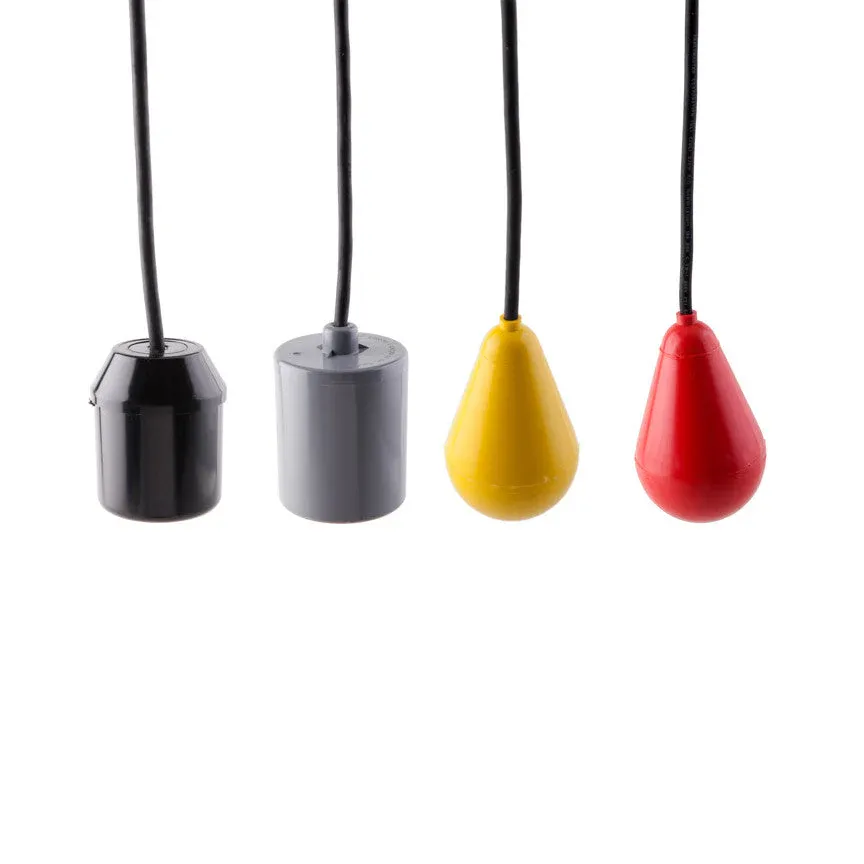How Does a Septic Float Switch Work? Understanding Your System's Control Center

Have you ever wondered what happens after you flush your toilet or drain your bathtub?
For those of us with septic systems, that waste doesn't just disappear - it's carefully managed by some clever technology right in our backyards! One of the most important parts of this system is something called a float switch.
Today, we're going to explore how does a septic float switch work and why it matters for your home's waste management.
Understanding this small but mighty component can help you avoid messy backups and keep your system running smoothly for many years to come!
What Is a Septic Float Switch?
A septic float switch is like a faithful guard that works 24/7 to protect your home from sewage backups. But what exactly is it?
The Basics of Float Switches
A float switch is a device that rises and falls with water levels
It turns pumps on and off automatically based on those levels
Most septic systems have multiple float switches for different functions
According to the National Environmental Services Center, proper functioning float switches are essential for preventing system failures and extending your septic system's lifespan.
Where Float Switches Are Located
Float switches are usually found in:
The septic tank itself (to monitor levels)
The pump chamber or dosing tank (if you have one)
The alarm box connection (to warn you of problems)
How Float Switches Actually Work
Let's break down the magic behind these simple but crucial devices!
The Science Behind the Switch
Install the float switch at the appropriate level in your tank
Allow the float to rise as water levels increase
Trigger the electrical connection when the float reaches a certain height
Activate the pump to remove excess water
Lower water levels, causing the float to drop
Deactivate the pump when levels return to normal
The Environmental Protection Agency (EPA) recommends regular inspection of float switches as part of routine septic maintenance.
Types of Septic Float Switches
Not all float switches are created equal. Here are the main types:
Mechanical Float Switches
Use physical movement to trigger electrical connections
Often shaped like balls or cylinders
Very reliable but have moving parts that can wear out
Mercury Float Switches
Contain a small amount of mercury that completes a circuit when tilted
Extremely reliable with fewer moving parts
Being phased out due to environmental concerns about mercury
Electronic Sensors
Use pressure or capacitance to detect water levels
No moving parts to wear out
Usually more expensive but longer-lasting
The Water Environment Federation notes that the type of float switch you choose can affect how many years your septic system will last.
Common Float Switch Problems and Solutions
Even the best float switches can run into trouble. Here's what to watch for:
Signs Your Float Switch Might Be Failing
Your pump runs continuously (even when it shouldn't)
Your pump won't turn on at all
You hear strange clicking sounds from your control panel
Your high-water alarm keeps going off
How to Fix Float Switch Issues
Check for obvious obstructions around the float
Clean any buildup of grease or solids
Test the electrical connections
Replace the switch if it's damaged or worn out
According to Purdue University's septic system research, most float switch problems are caused by either electrical failures or physical restrictions that prevent proper movement.
Maintaining Your Float Switches for Maximum Lifespan
Want your septic system to last as long as possible? Here's how to care for those crucial float switches:
Routine Maintenance Steps
Inspect your float switches visually during regular tank pumping
Test the alarm system monthly by pressing the test button
Keep detailed records of all maintenance and repairs
Avoid flushing items that can build up and interfere with float action
Penn State Extension recommends professional inspection of all electrical components, including float switches, at least every 3 years.
What Not to Flush
These items can cause buildup that interferes with your float switches:
Cooking grease or oils
"Flushable" wipes (they're not really flushable!)
Feminine hygiene products
Paper towels
Coffee grounds
DIY vs. Professional Float Switch Work
When should you call in the pros? Let's clarify:
Safe for DIY:
Visual inspections
Testing alarm functions
Keeping maintenance records
Learning about your system
Call a Professional For:
Electrical troubleshooting
Float switch replacement
System reconfiguration
Annual inspections
The National Onsite Wastewater Recycling Association emphasizes that electrical work on septic systems should always be performed by qualified professionals due to shock hazards and specialized knowledge requirements.
Conclusion
Understanding how does a septic float switch work gives you valuable knowledge to maintain your home's waste system properly.
These small but mighty devices play a crucial role in protecting your property from backups and extending your system's lifespan. Regular inspection and maintenance of your float switches are simple steps that can save you thousands in repair costs down the road.
Remember that proper care of all components, including float switches, is essential - with the right attention, your system can serve you reliably for decades!

© 2025 | All Rights Reserved | Privacy Policy
